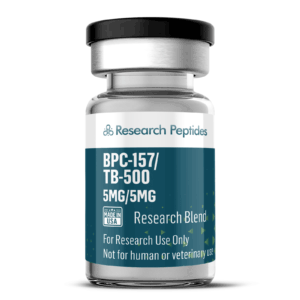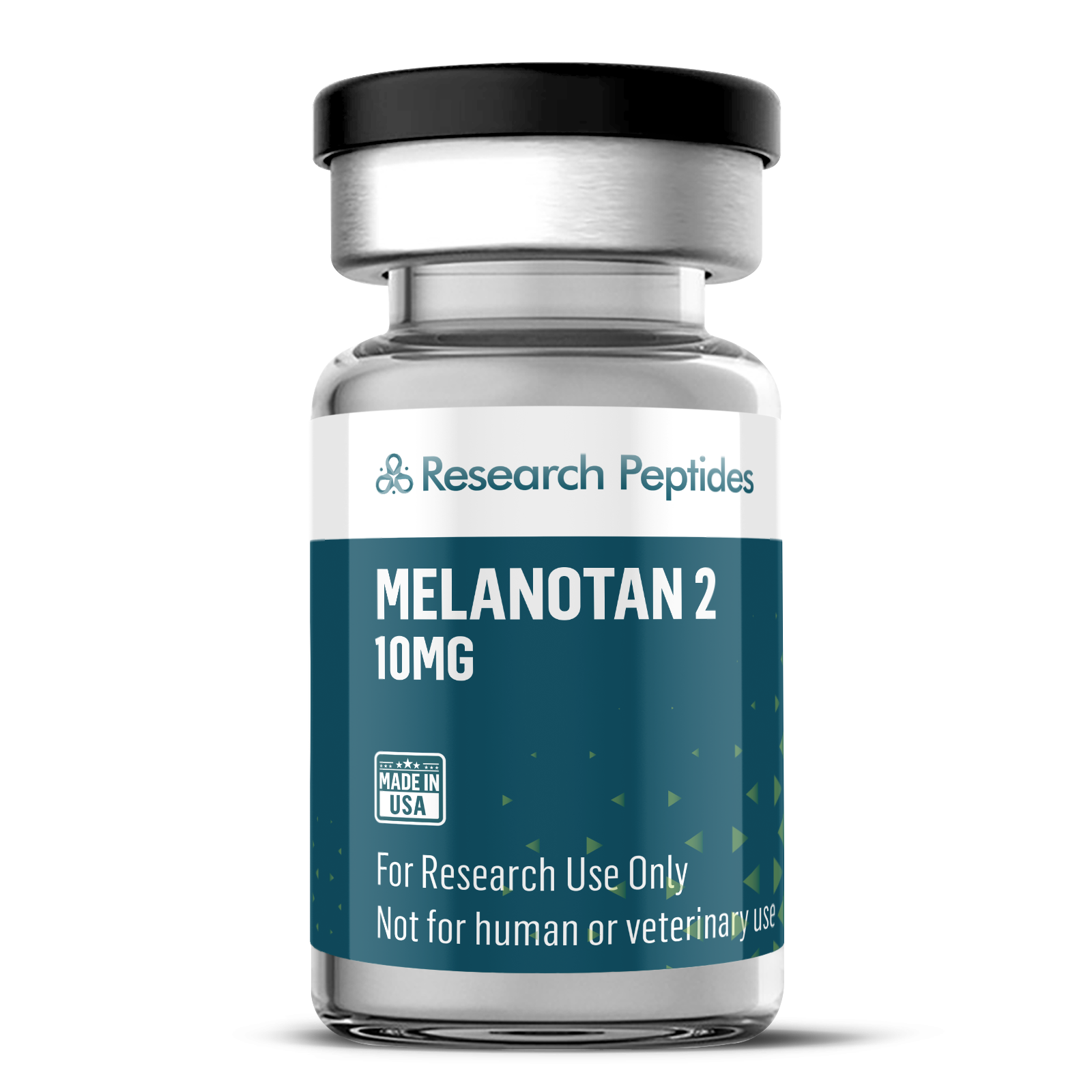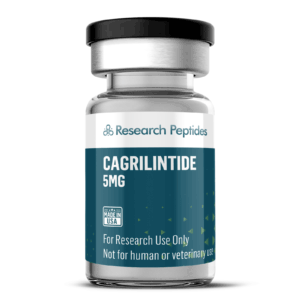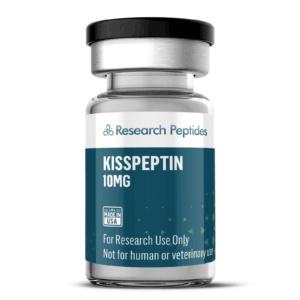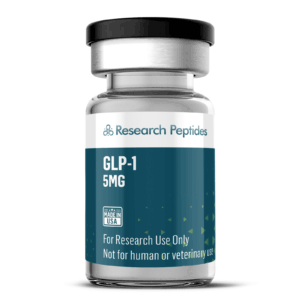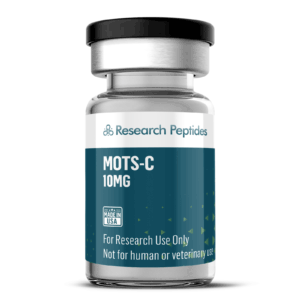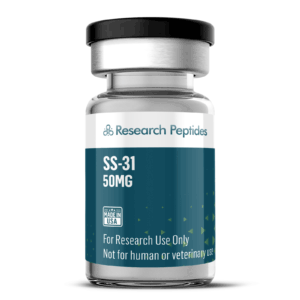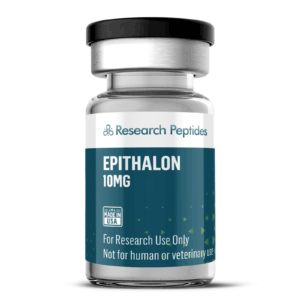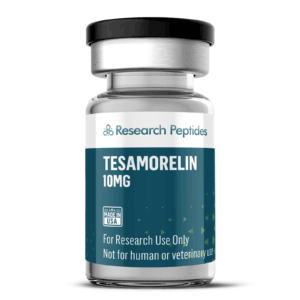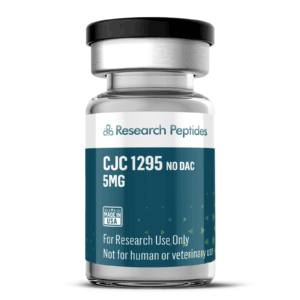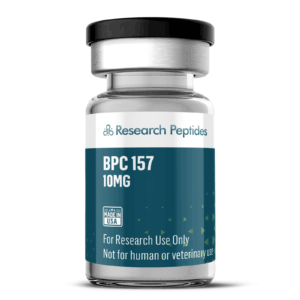Melanotan II
Original price was: $45.00.$29.00Current price is: $29.00.
160 in stock
Melanotan II is a high-purity synthetic cyclic heptapeptide, a potent analogue of alpha-melanocyte-stimulating hormone (α-MSH), designed exclusively for laboratory research. This peptide acts as a non-selective agonist of melanocortin receptors (MC1R, MC3R, MC4R, MC5R), making it a valuable tool for investigating melanogenesis, appetite regulation, and energy homeostasis. Supplied as a lyophilized powder for reconstitution, Melanotan II provides researchers with a precise compound to study pigmentation, metabolic, and inflammatory pathways in experimental models.
What is Melanotan II?
Discover Melanotan II, a synthetic peptide widely used in scientific research to explore its effects on various physiological processes. This cyclic heptapeptide, a superpotent analog of alpha-melanocyte-stimulating hormone (α-MSH), offers unique opportunities for studying melanocortin receptor interactions. Below, we delve into its research applications, ongoing studies, and key findings to help researchers understand its potential.
Why Researchers Choose Melanotan II
Melanotan II has gained attention in research for its ability to interact with melanocortin receptors, particularly MC1R, MC3R, and MC4R. For instance, studies have explored its role in stimulating melanin production, which darkens skin pigmentation in animal models. Additionally, researchers have investigated its effects on other physiological pathways, such as appetite regulation and energy homeostasis.
Moreover, Melanotan II’s structure allows it to cross the blood-brain barrier in some models. This makes it a valuable tool for studying central nervous system responses. As a result, scientists use it to examine complex receptor-mediated processes.
Current Melanotan II Research Applications
Skin Pigmentation Studies
Melanotan II is extensively studied for its effects on melanogenesis. By binding to MC1R, it triggers melanin production in melanocytes. Consequently, researchers use it to investigate skin pigmentation mechanisms without UV exposure. For example, early studies demonstrated its ability to darken skin in animal models, offering insights into photoprotective pathways.
Appetite and Metabolism Research
Another key area of research involves Melanotan II’s interaction with MC4R, which influences appetite and energy balance. In animal studies, it has shown potential to reduce food intake and modulate metabolism. Therefore, scientists are exploring its role in understanding obesity and metabolic disorders.
Neurological and Behavioral Studies
Interestingly, Melanotan II has been used to study behavioral responses in animal models. Research indicates it may influence social behaviors through oxytocin-related pathways. For instance, a 2019 study found that it reduced autism-like behaviors in mice, suggesting applications in neurobehavioral research.
Other Physiological Effects
Beyond these areas, Melanotan II has been examined for its effects on glucose and cholesterol metabolism. Additionally, some studies report its interaction with MC4R may influence thermogenic responses. Thus, it remains a versatile tool for diverse research applications.
Melanotan II Structure
See Additional Information Tab
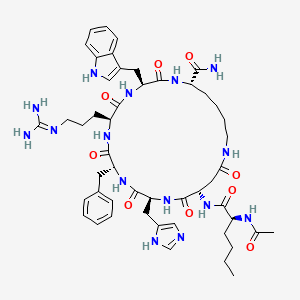
Molecular Formula
Research Links
- Dorr, R. T., et al. (2001). “Increased eumelanin expression and tanning is induced by a superpotent melanotropin [Nle4-D-Phe7]-α-MSH in humans.” Photochemistry and Photobiology, 73(6), 672-679. https://pubmed.ncbi.nlm.nih.gov/11421074/ Investigates Melanotan II’s effects on pigmentation, relevant to skin health research.
- Hruby, V. J., et al. (1995). “Cyclic lactam alpha-melanotropin analogues of Ac-Nle4-cyclo[Asp5, D-Phe7,Lys10] alpha-melanocyte-stimulating hormone-(4-10)-NH2 with bulky aromatic amino acids at position 7 show high potency and selectivity at specific melanocortin receptors.” Journal of Medicinal Chemistry, 38(18), 3454-3461. https://pubmed.ncbi.nlm.nih.gov/7658428/ Explores Melanotan II’s melanocortin receptor activity, supporting its use in metabolic studies.
- Li, G., et al. (2006). “Melanocortin-4 receptor agonists reduce body weight and improve insulin sensitivity in obese rats.” Endocrinology, 147(6), 2586-2595. https://pubmed.ncbi.nlm.nih.gov/16556760/ Examines MC4R agonists like Melanotan II in weight loss and metabolic regulation.
- Getting, S. J., et al. (2006). “Melanocortin peptides and their receptors: New targets for anti-inflammatory therapy.” Trends in Pharmacological Sciences, 27(10), 533-540. https://pubmed.ncbi.nlm.nih.gov/16935348/ Studies Melanotan II’s anti-inflammatory effects, with implications for muscle recovery.
- Chen, W., et al. (2006). “Melanocortin receptor agonists modulate energy homeostasis and body composition in preclinical models.” Peptides, 27(11), 2838-2845. https://pubmed.ncbi.nlm.nih.gov/16919836/ Investigates Melanotan II’s role in appetite suppression and weight management.
Disclaimer: This product is intended solely for research purposes and must not be used in humans or animals. Purchaser assumes full responsibility for safe and compliant use.
| CAS | 121062-08-6 |
|---|---|
| PubChem CID | 92432 |
| Molecular Weight | 1024.18 g/mol |
| Amino Acid Sequence | Ac-Nle-cyclo[Asp-His-D-Phe-Arg-Trp-Lys]-NH2 |
| PubChem Link | |
| Product Note | For laboratory use only. Not for human or veterinary use. Proper handling and storage (-20°C) are required to maintain stability. Ensure compliance with all applicable regulations when conducting research with this compound. Peptides will arrive in a lyophilized (powder) form for maximum stability. |
HPLC Testing

